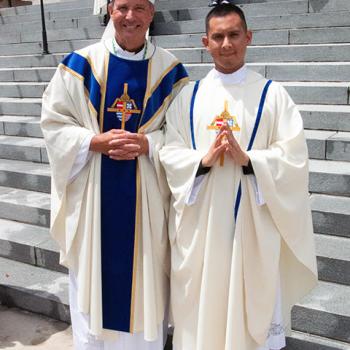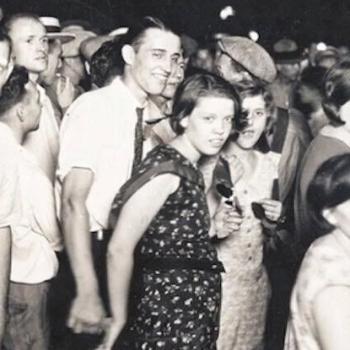The woman's parents lived about half an hour east on a small farm on the outskirts of The Dalles, and they were horse trainers by trade. She invited me to join her on a sunset ride the next afternoon, and I readily accepted. When I arrived at the farm, her father, grizzled but polite, was already saddling up the horses. Her mother asked me questions about living in New York and confessed that she had never traveled outside of Oregon. Their marriage seemed warm and solid; they'd been partners, both personally and professionally, for a very long time. It made me think about how my own marriage was on its last legs. As we rode our horses over brown hills and brush, and as deer and pheasants darted out of our path, I wondered why a comfortable partnership wasn't enough for me. What was I seeking with such restlessness, and why?
Yet again, all I had were questions.
After almost two weeks away, I'd resolved nothing about the decisions that awaited me back home but that I knew could no longer be pushed aside. What were my options? I could brood alone in the cabin, numb myself with booze, or get outside and at least feel like I was part of a larger reality beyond my inner turmoil. On the morning before my return flight, I drove over the Bridge of the Gods, crossed the border into Washington, and entered Gifford Pinchot National Forest, a wilderness area in the heart of the volcanic Cascade mountain range. I decided to hike up Sawtooth Trail, a former section of the famous Pacific Crest Trail that stretches from Mexico to Canada.
The arduous trail climbed up to the 5,400-foot summit in virtually a straight shot, and I was dripping with sweat ninety minutes later when I finally broke through the tree line and reached the exposed but level ridge at the top of Sawtooth Mountain. The setting was spectacular. Wind howled over the summit; craggy boulders crammed the peak; any misstep would lead to a sheer fall of thousands of feet. From that uneasy perch, there was a 360-degree view of Mount St. Helens to the west, Mount Rainier to the north, and Mount Hood to the south. While I couldn't actually make it out, I sensed the Pacific Ocean as its waves muscled inexorably into the rugged coastline on one side of me; on the other, great rolling plains unraveled east as far as my eyes could see. I was just a speck, a bag of bones surrounded by an unfathomable enormity.
I began to cry. I'd never felt so starkly alive, yet so profoundly lost, at the same time. "What am I supposed to do?" I asked aloud. "What happens now?"
The reply to my query was silence. That was the gospel of the mountain.
At this stage of my life, would I have the maturity and strength to tolerate that kind of ambiguity? It was too early to tell. I looked for an answer through the lens of my faith tradition. The gospel of Sawtooth was, for me, the gospel of Sinai — mystery, ineffability, at times even silence. While Moses received the Torah from God on top of the desert mountain, its many laws and teachings often raise more questions than they answer: What is the meaning of life? Why do I exist? Where am I heading?
It is questions such as these that have preoccupied my mind (and transformed my life) in recent years, both as a rabbi and as a man.
What has intrigued me most about the Hebrew Bible specifically is not its dramatic stories, colorful characters, or moral lessons, but its questions. These many and varied questions are profound, pedagogic, rhetorical, challenging, at times even painful. Some of them are famous and some infamous; some have elevated souls and others have humbled them. Many of these questions are voiced by biblical figures, while others are attributed to God, either through intermediaries or directly. At their core, almost all of these questions are as relevant and compelling today as they were in antiquity.
These are questions that all of us ask at one time or another, in varying order, during the course of our lives. As I have strived to navigate through the transitions of midlife — and my own personal and spiritual trials — these inquiries have granted me a paradoxical sense of security, an invisible yet very palpable feeling of comfort and community. They've shown me that, in all my perplexity, I am far from alone.
The Bible is neither a philosophical treatise nor, in my view, a roadmap for redemption. It is instead a complex, existential expression of uncertainty and confusion, of yearning and hope, of wonderment, suffering, and joy. The Bible, and the timeless questions interwoven in it, is a testament to, and a portrait of, the valleys and peaks of the human condition. It doesn't offer us rigid answers; it graces us with fellowship.
In the Divine Comedy, Dante finds enlightenment only after, having become disoriented, he enters a dark forest. Similarly, the skin on the face of Moses becomes "radiant" only after he enters the thick, smoky cloud that covers Mount Sinai at the moment of divine revelation. The message seems clear: It is in the heart of unknowing, the "thick darkness" where the lack of clarity fuels a hunger for answers, that we mature, evolve, and ultimately discover our true path. Viewed in this way, perplexity is as much a gift as it is a source of discomfort, a conduit toward inner advancement as well as a crucible through which our minds and souls are pushed to their breaking points.
This series is based on Rabbi Goldstein's new book, Eight Questions of Faith: Biblical Challenges That Guide and Ground Our Lives, which will be published in September 2015. It can be pre-ordered here.




